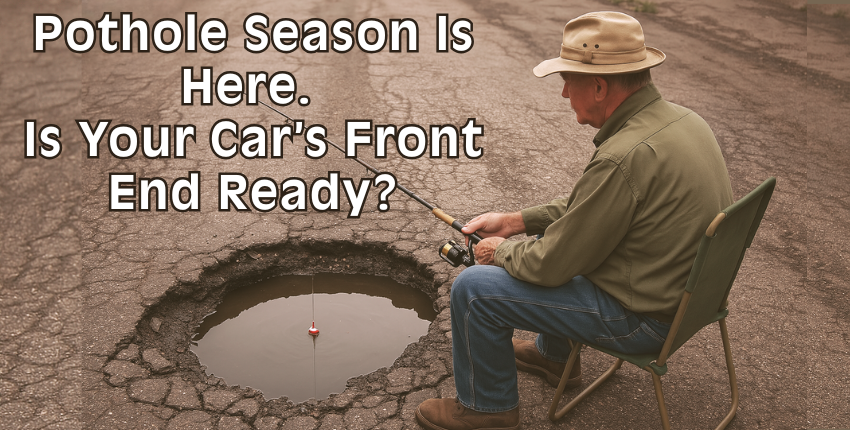Spring in Illinois is a mixed bag. The snow melts, temps climb, and the sun makes a comeback. But while we’re all celebrating the change of seasons, your car’s front end might be dreading it.
Welcome to pothole season, when the roads look like they’ve taken a beating from a jackhammer, and your steering wheel suddenly has a mind of its own. Around this time every year, we see a noticeable increase in steering and suspension issues, and it’s no mystery why. Those post-winter craters can do some real damage, especially if you’re not sure what to watch for.
Let’s break it down so you know what your vehicle’s telling you—and when it’s time to swing by for a closer look.
What Is the “Front End,” Exactly?
When we say “front end damage,” we’re talking about the parts that handle your ride, keep you in control, and absorb the worst of the road. That includes:
- Steering components like the rack and pinion, tie rods, and steering knuckles
- Suspension parts including shocks, struts, control arms, ball joints, bushings, and springs
- Wheel alignment, which keeps everything rolling smoothly and your tires wearing evenly
All of these work together to make your ride comfortable and keep you pointed in the right direction. But potholes? They’re like a wrecking ball for precision engineering.
How Potholes Wreck Your Suspension
Thanks to the freeze-thaw cycle, water seeps into pavement cracks, freezes, expands, and breaks up the road surface. Toss in a winter full of snowplows and traffic, and you’ve got a pothole waiting to happen.
Hit one hard enough and you might damage:
- Wheels (bent or cracked)
- Shocks and struts
- Control arms or ball joints
- Wheel alignment
- Suspension bushings
- Axles or CV joints (in extreme cases)
Some damage is immediate. Other times, it slowly wears things down and gets worse over time. Either way, that “thud” you feel isn’t just annoying, it could be expensive if ignored.
Warning Signs of Pothole Damage
Not all problems announce themselves with smoke or a flat tire. A lot of pothole-related issues sneak up on you. Keep an eye (and ear) out for these signs:
- Your steering wheel feels crooked
If you’re driving straight but the wheel isn’t, your alignment might be off. Worse, you could have a bent steering or suspension component.
- You feel vibration or wobble
A bent wheel or worn suspension part can cause vibration through the steering wheel or throughout the vehicle.
- Clunking or rattling noises
That knocking sound over bumps or when turning? Could be worn-out ball joints, sway bar links, or a loose control arm.
- Uneven or rapid tire wear
Misalignment or worn parts can eat through your tires quickly. Check for feathering, cupping, or bald spots.
- A rougher ride
If your smooth ride has turned into a bouncing mess, your shocks or struts may be leaking or worn out.
Why It’s Smart to Act Now
Delaying a steering or suspension inspection might save time today, but it often leads to bigger repairs (and bigger bills) later. On top of that, a car that doesn’t handle properly can be dangerous. If you have to swerve or stop suddenly, you want your vehicle to respond how it should.
An issue like poor alignment can also wear out new tires long before their time. That’s hundreds of dollars down the drain—just because something small went unchecked.
When It’s Worth Getting Things Checked
You don’t need to panic every time you hit a bump, but if something feels off—pulling, shaking, strange noises—it’s smart to take a closer look. Pothole-related damage isn’t always dramatic. It can start small, with a little vibration or uneven tire wear, and quietly wear down other components over time.
So what should be checked? Here’s what we look at when we’re chasing down a pothole problem:
- Struts and shocks to see if they’re leaking or worn out
- Tie rods, ball joints, and control arms for any looseness or damage
- Steering linkage for unusual play or stiffness
- Bushings that may have cracked or deteriorated
- Tire wear patterns that hint at underlying alignment issues
- Alignment angles to make sure everything’s still in spec
This isn’t about upselling you on a dozen repairs. Sometimes everything’s fine. Other times, there’s one or two things worth addressing now before they snowball into something bigger.
A Few Tips to Avoid Trouble
You can’t always dodge every pothole, but you can lower your risk with a few simple habits:
- Slow down when roads are rough or water is hiding the pavement
- Keep tires inflated to the recommended PSI
- Avoid puddles, especially after a freeze
- Pay attention to new noises or changes in handling
- Have your alignment checked annually or after a major pothole hit
Final Thoughts
Pothole season might be a given around here, but damage from it doesn’t have to be. Catching issues early—before a wobble turns into a worn-out tire or a clunk turns into a costly repair—can save you a lot of hassle.
If something feels off, or if you just want peace of mind after a rough stretch of road, we’re here to take a look. No pressure, no guessing—just straight answers and honest advice.
Wondering if that last pothole did more than just shake your coffee?
We’re happy to check things over and let you know where you stand.
Stop by when it works for you, or schedule a time online.

